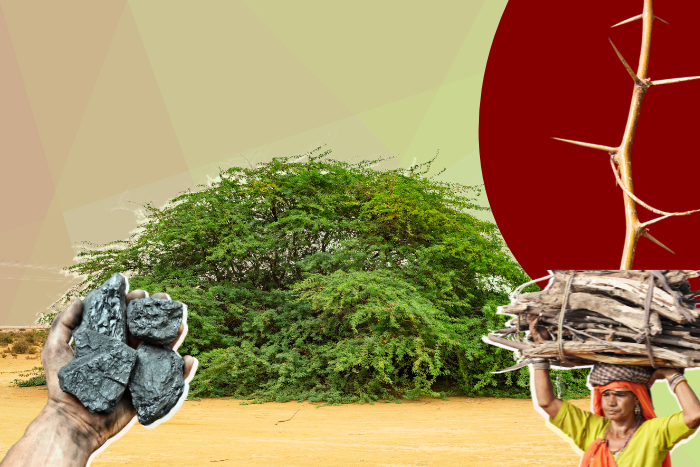Climate change is projected to exacerbate the spread of invasive alien species like Neltuma juliflora in India—which has now become an integral part of the ecosystem it invaded, with several sections of society dependent on it. Experts say aiming to control the invasive species, rather than eradicating is the way forward
Among the many ways that climate change threatens life on Earth, there is one that is not talked about as much—aiding the spread of invasive alien plant species. A new report found that under two climate change scenarios—representative concentration pathways (RCP) 2.6 and 8.5—the share of land under protected areas that will become conducive for the spread of Neltuma juliflora—a widespread invasive alien species in India—will rise. According to the report, several protected areas which are home to a range of amphibians, reptiles, birds and mammals are located in these areas. Spread of Neltuma juliflora in such biodiversity rich areas would mean a habitat loss for these organisms and a disruption in the ecosystem.
Last year, the Intergovernmental Platform on Biodiversity and Ecosystem Services (IPBES) released their first ever and most comprehensive Assessment Report on Invasive Alien Species, which said that they are one of the five major direct drivers of biodiversity loss globally and are costing $423 billion annually.
While eradicating them seems like the most obvious way forward, experts say it is more complicated than that. First, it is not easy to reclaim land which has been invaded by this alien species for over a century. Second, Neltuma juliflora has become quite an integral part of the ecosystem it has invaded—providing locals with resources and ways of earning livelihoods. Third, when the going gets tough due to climate-induced erratic weather patterns like drought, the invasive species becomes a reliable ‘plan B’ for those otherwise engaged in agricultural/dairy activities. While it colonises farmlands, driving out farmers, it provides income to the landless. Different socio-economic groups perceive it differently—leading to the conundrum of keeping it or killing it.
Experts recommend finding a middle ground. Controlling the spread, rather than complete eradication, because that is not only practical, but also beneficial. At the same time, popularising indigenous ways to use this invasive species can help address the issue, CarbonCopy finds.
A brief history of Neltuma Juliflora
Previously called Prosopis juliflora, the invasive species is natively called vilayati babool or vilayati keekar. It is a thorny woody shrub or small tree, which grows up to 5-10 m in height. The trees form dense thickets in open lands in arid to semi-arid regions across the country.
So where did they come from? There isn’t one single answer to that question. Native to South America and Mexico, researchers say that it was “introduced in India in 1857 intentionally to halt further ‘desertification’ in the Thar desert, and in 1878 to peninsular India as a source of fuelwood”.

A video by the Ashoka Trust for Research in Ecology and the Environment (ATREE) explains how the Neltuma juliflora was aerially seeded by the Maharaja of Jodhpur in the mid 1930s.
According to the Food and Agriculture Organization (FAO) of the United Nations, Neltuma juliflora is now found in many states of India, including Andhra Pradesh, Karnataka, Maharashtra, Orissa, Punjab, Uttar Pradesh, Tamil Nadu and West Bengal, and in almost all districts of Haryana, Gujarat and Rajasthan.
A blessing and a bane
Now standing in all shapes and sizes, the invasive species has become omnipresent—taking over roadsides, grasslands, protected forests, nature reserves, abandoned farms, grazing lands, irrigation channels, and river beds alike.
“It’s not just because they are invasive that they spread anywhere. It is partly triggered by what we do. A lot of invasive aliens often occupy areas that have been impacted or disturbed or damaged by other forms of human actions. It makes a disturbed open habitat, which then becomes conducive to the spread. So, take a forest that has been logged, burnt, and then it leads to a habitat, which becomes conducive to their spread,” explains T R Shankar Raman, Scientist, Nature Conservation Foundation (NCF).
In Banawas, at the bank of sand river Luni in Rajasthan–where rampant illegal sand mining has altered the river ecosystem—Pukhraj Prajapat, a retired farmer, points at a full grown Neltuma juliflora tree. He says, “Yeh to sabse bura hai, vinaash karta hai, jaha tak iski chaaya padti hai, waha kuch nahi udgta (this is the worst of all, leads to destruction, nothing else grows under its shadow),” pointing at the clear ground underneath the tree.
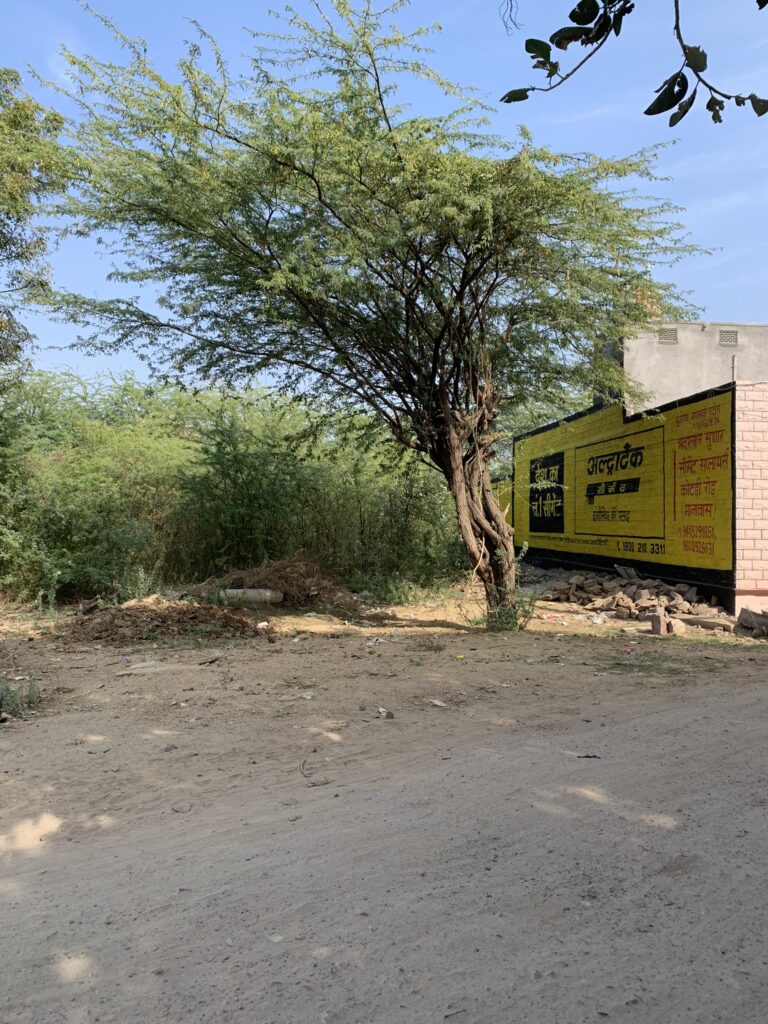
Prajapat is talking about the allelopathic effect of the invasive. This means that Neltuma juliflora discourages other plants from growing around it. It is toxic to other biota, monopolising space and nutrients while excluding other species. In the native habitats of Neltuma juliflora, other species have developed a mechanism to counter its allelopathic effect, but such a defence is not available to plants for which Neltuma juliflora is an alien.
In many ways, this is an invader full of contradictions.
On the one hand, it provides affordable firewood, animal feed, medicine, timber, honey, and charcoal in developing nations such as Kenya, Ethiopia, Nigeria, and India. On the other hand, its remarkable adaptability to survive and flourish in extremely harsh desert situations has made it a major weed, invading the space for humans and animals alike. A water-guzzling species with deep roots, the shade it provides poses a threat to the ecosystem, altering the composition and lowering the number, richness, and variety of understory plant species. Its spread has led to the replacement of many native species like Acacia nilotica, Mitragyna parvifolia, Prosopis cineraria, Salvadora oleoides, Salvadora persica, and Ziziphus mauritiana in Keoladeo National Park, Rajasthan. The blackbuck population in the Sathyamangalam Tiger Reserve in Tamil Nadu has also been affected by its spread.
But for those who depend on the tree, calling it “the worst of all” can seem disrespectful.
The coal makers
The most common Neltuma-juliflora-based enterprise is charcoal manufacturing. In Lakhar Thumb village of Jodhpur district, Rajasthan, the Jogi tribe— which was traditionally engaged in jute artisanship to make jute bags and baskets— burns the invasive tree to make charcoal. As cheap plastic products swiftly drove jute products out of the market, the tribe turned to coal making.

Ashuraam Jogi, along with his family, does this work all year round— barring monsoon when the wood is wet. The family cuts vilayati babool, cleans it up and stocks the logs to make a bhatti (furnace) and sets it on fire after covering it up with hay. The lots can vary in size, but typically each lot fetches about six to seven quintals of charcoal, which is sold at the rate of about ₹10-12/kg. Typically, they end up making about ₹30,000 a month. The whole procedure to gather the wood, clean it, cut it, burn it and cool it can take about a week or ten days, Jogi says. But the most popular use of Neltuma Juliflora is also the most emission-heavy enterprise.
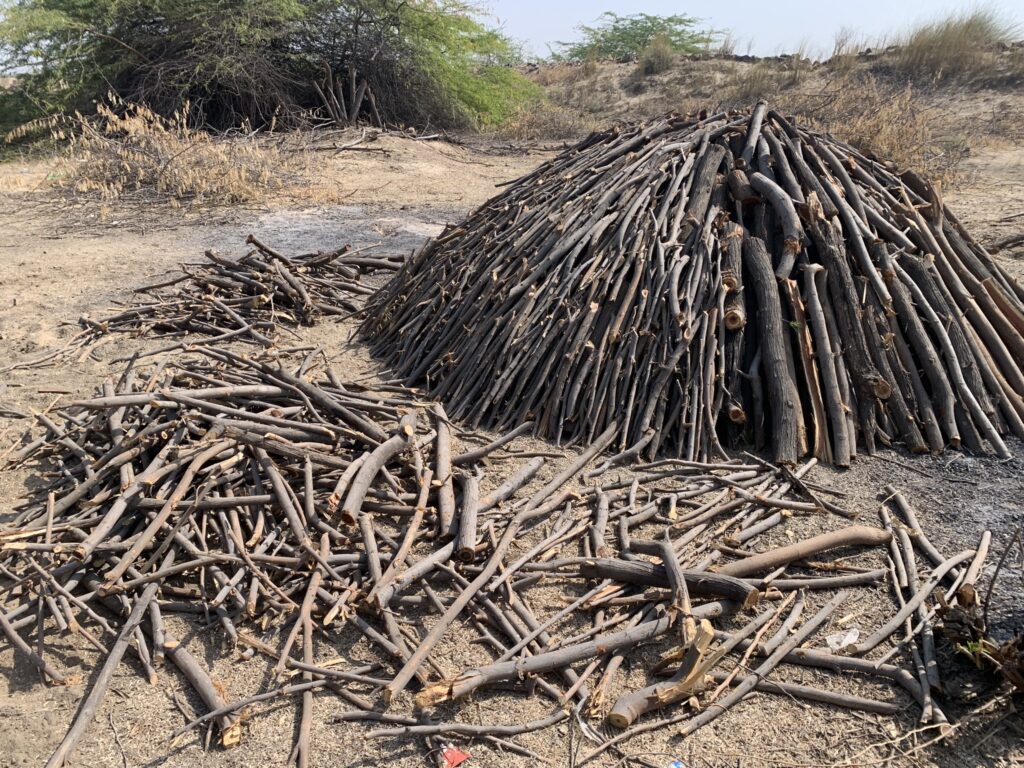
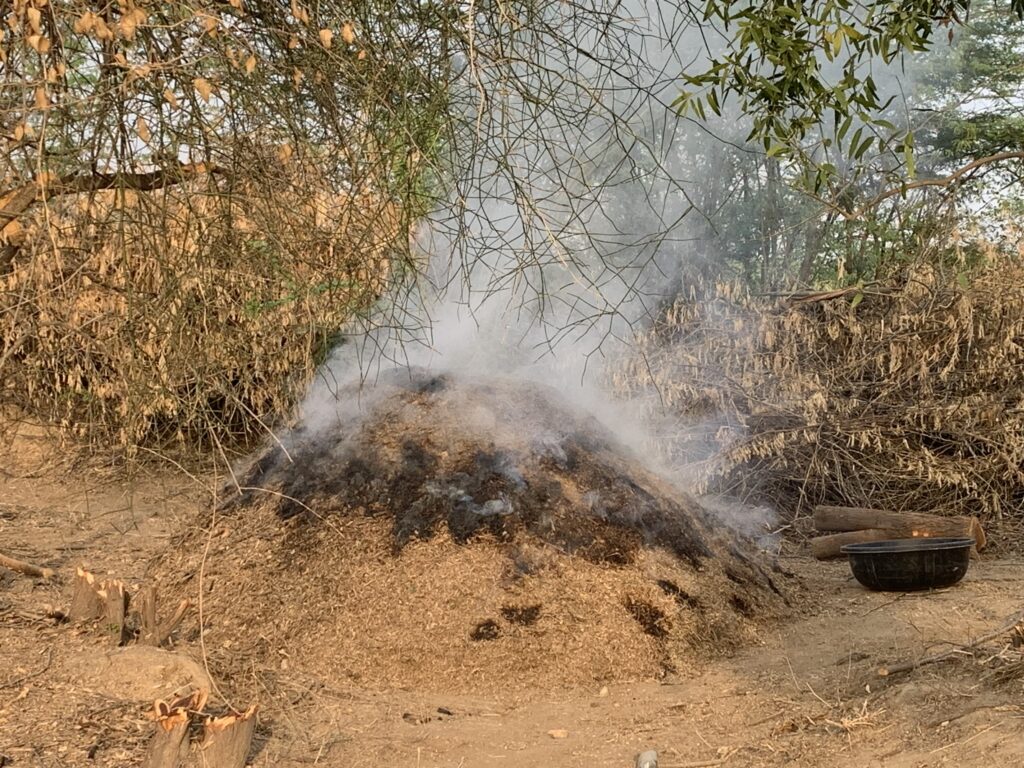
The migratory pastoralist community of Maldharis in Kutch, Gujarat, are engaged in the same occupation. Independent photographer, writer, and National Geographic explorer Arati Kumar-Rao talks about the extent of the practice in a podcast, where she recounts passing through villages in Kutch one night with “zero visibility” as locals burnt Neltuma juliflora to make charcoal. “You can’t breathe, it’s black-thick smoke” she says.
Rao also raises a concern arising from this practice. She asks, “How many people really know Prosopis juliflora ( Neltuma juliflora) from a native babool? Not too many.” She wonders if those who take their JCBs to uproot Neltuma juliflora don’t uproot the native counterpart with it.
“Most people from the area can easily tell desi babool and vilayati babool apart, it’s not that difficult. For someone not familiar with the species, it may take a while to learn to distinguish between them. But they are very distinctive, the branching pattern of Neltuma juliflora is zigzag, desi babool is very straight and its branches are not crooked like those of the vilayati babool. The flowers are different,” says Ankila Hiremath, Adjunct Senior Fellow, ATREEE.
Citing the example of Banni grasslands in Kutch, Gujarat—where the rate of Neltuma juliflora’s spread is as high as 25.5 km2 per year, Hiremath says that there is always a danger of that (uprooting native trees alongside) but it doesn’t always have to be the case.


Readily available fuelwood
It is not just the charcoal makers who benefit from the invasive species. In many districts of Rajasthan, CarbonCopy finds that women fuel their traditional stoves with the wood. With sporadic supply of LPG cylinders in the region, Neltuma juliflora is still a reliable everyday source of fuel for many households.

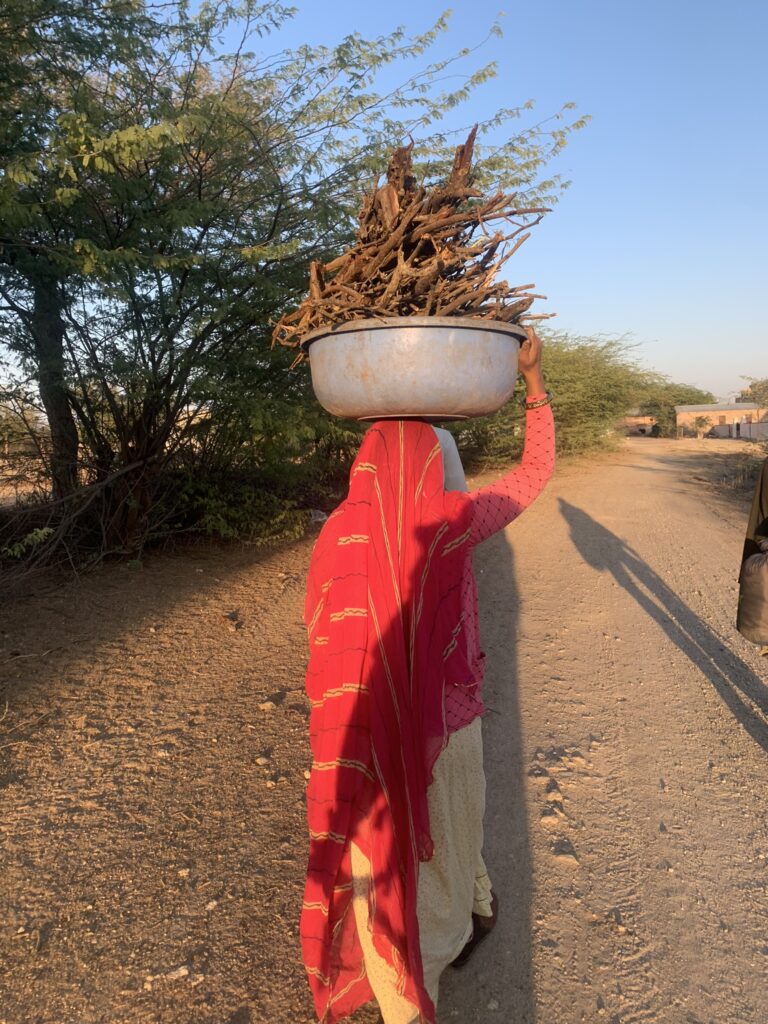

A local farmer tells CarbonCopy that they use ash from the stoves in farming, too. The ash is spread over the soil where onions and garlic are grown to retain the moisture in the soil. This has to be done only with these two crops, otherwise the crop will rot, the farmer warns.


The invasive has also been used to make furniture as its abundance has made it an affordable option for many. Various reports have mentioned its use as timber.
“It is cheap but it doesn’t last long. Furniture made out of its wood is also prone to termites,” says Raju Bishnoi, a resident of Barna, Rajasthan, pointing at a termite-infested door frame made out of vialyati babool in his house.
The forgotten pods
While charcoal-making is the most common economic enterprise, less attention has been paid to products made from parts of the invasive—for instance, its pods. The species’ seed pods are cylindrical, up to 10 cm long.
According to a study, the flour made from these pods has been a food item in North and South America since centuries, but it must be eaten in moderation and as a minor supplement to flour of other grains. Neltuma juliflora pod flour is rich in sugars, moderate in proteins, and low in lipids. It contains phosphorus and calcium.
Locals from Bhacharna village in Rajasthan tell CarbonCopy that they commonly consumed pods—locally called babool falis or babool khokha— as kids. But it is not so popular anymore as there’s social stigma attached to abundantly available pods for free.
However, pods are more popular as livestock feed. Goats chew on the pods as they fall to the ground or hang on low branches. Reports emphasise that no feed containing only the pods, or with pods as the major fraction, is safe. Most reports recommend that pods should constitute no more than 20% of any feed as higher fractions are a health hazard.
“It is used as fodder. But not all livestock can tolerate it. The Maldharis in the Kutch say cows can’t stand it. They say ‘Unke pet me gaanth ban jaati hai’ (it leads to knot formation in their stomach). So goats, buffaloes and camels seem to tolerate it, but cows can’t,” explains Hiremath.
Untapped potential
Research has shown that native pollinators are drawn to the vibrantly coloured Neltuma juliflora flowers since they provide a supply of nectar and pollen. The end product is high-quality honey. The gum that emerges from the stem and branches of Neltuma juliflora forms sticky mucilage that can be used to mend ceramics and as an emulsifying agent in confections.
In fact, the same research mentions Indian civilisations in central-northwest Mexico and the southwestern United States have been using Neltuma juliflora gum extensively since pre-Columbian times. It was primarily used as a sweet, an ingredient in food for people and animals, and a medicinal remedy for conditions like diarrhoea, stomach aches, sore throats, and pain in the eyes. It was also used to treat open wounds and prevent infections. In Mexico, Neltuma juliflora gum is still used in small-scale processing enterprises, which mostly deal with food and confectionery products.
However, these uses remain limited, seasonal or unknown in India. Only charcoal reigns supreme as the most profitable venture.
Controlling over eradicating
Given the ways Neltuma juliflora has become integral to people’s lives in regions it has invaded, experts say eradicating it is not the best way to go.
While more affluent communities advocate for eradication, the poorer communities depend on it. “When we saw parts of the community who are entirely dependent on Neltuma juliflora, we realised that the problem is much more complex. There are those who see it as a key resource during pinch periods like droughts. So, complete eradication and restoration is not feasible. But there may be certain parts of the landscape in which trying to control them is more worthwhile,” explains Hiremath.
But where can this process begin?
“Ecologists often say that a high priority area for dealing with invasion is where it is spreading right now. That’s the place we should first target and work at the invasion front into the other side. Then you have a way of expanding the natural ecosystem rather than the other way around. Unfortunately, it doesn’t work that way. When people think of removal of woody species like Neltuma Juliflora, they tend to target intensive areas with thick wood as it brings charcoal, timber, etc. but they don’t succeed. Such lands are recolonised,” answers Raman.
Controlling these invasive species requires a plan. Apart from understanding the causes, it is crucial to build a restoration plan, which is often labour-intensive and spans over several years.
“It can’t just be a removal. What comes next? Sometimes the same species can recolonise the area, sometimes secondary invasion— which means another invasive may invade. There should be a plan for ecological restoration of that area depending on the kind of ecosystem it is. If it’s grassland, you want to encourage grass to come back. You can’t just remove it and hope that it is gone,” says Raman.
While the ecological restoration should be attuned to the kind of ecosystem it is, the plan also needs to include local community members. They are often well-informed about their native species and restoration activities could be turned into employment opportunities for them, Raman adds.
As climate impacts worsen, the land under the invasive will grow—further exacerbating the issue of water scarcity and threat to biodiversity. At the same time, efficient use of the resources from Neltuma juliflora can help revitalise struggling local economies. The answer lies in a balanced approach which counters the spread while optimising the use of this alien invader.
This article has been produced as part of Veditum India Foundation’s Moving Upstream fellowship programme.

